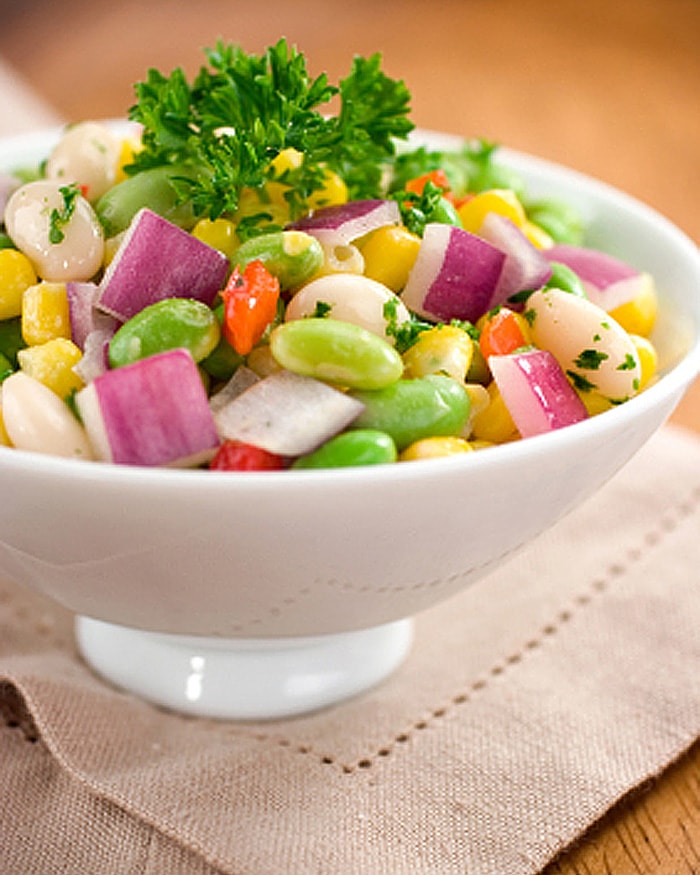
Written By: Beth Ehrensberger, RD
Title: Registered Dietitian
Alumni: University of Tennessee, Knoxville
Last Updated on:

There’s no question that beans and legumes pack big health benefits – with research suggesting that these little wonders can do everything from help prevent cancer and heart disease to regulate blood sugar – it’s no wonder beans have been dubbed “magical.” However, it’s hard to find the magic when you’ve got a swarm of hungry diners in your kitchen, a bag (or can) of beans, and no ideas for dinner. It’s easy to add beans to your diet – all you need are a few ideas and a little inspiration.

Table of Contents
Nothing beats the flavor and texture of fresh beans, but the best of beans is that you can also enjoy them frozen, canned or dried.
Meat doesn’t always make the meal, since adding beans to your main dish supplies a hefty dose of naturally cholesterol-free protein (around 15 grams per cup, some varieties more or less). Like meat, beans are a good source of iron, but the type of iron in beans is called non-heme, which your body doesn’t absorb as well as heme iron (which is only found in animal sources). You can create an iron-clad power pair with foods high in Vitamin C and beans, since the combination aids in iron absorption. Try canned, diced tomatoes with onion, green pepper and black eyed peas served over rice for a satisfying and iron-packed meal.
For a carnivorous crowd, it’s easy to ease into adding beans by using them to supplement the foods you already serve. Tacos on your menu? Instead of the usual ground beef, reduce a couple cans of rinsed black beans with chopped onion and your regular taco seasoning in just enough water to cover. You can punch up a pasta salad with extra veggies and a can of rinsed chickpeas or replace kidney beans for half the meat you would normally use in chili. Lentils tossed with leftover veggies, a light vinaigrette and rice makes a quick and healthy salad. Adding beans is an easy way to add nutrition, since they can easily adapt to compliment the flavors you’re cooking!
Enhance the fiber and protein in your usual dishes with easy-to-prepare beans. Whether you choose fresh, frozen, canned or dried, it’s easy to add beans with a little creative cooking.
Alumni: University of Tennessee, Knoxville – Beth Sumrell Ehrensberger is a Registered Dietitian and holds a Master Degree in Public Health. An experienced nutrition counselor, writer and public speaker, Beth specializes in translating complex nutrition information into practical concepts. Beth was awarded a Nutrition Communications Fellowship to the National Cancer Institute, and has worked on the internationally recognized Nutrition Action Healthletter of the Center for Science in the Public Interest.